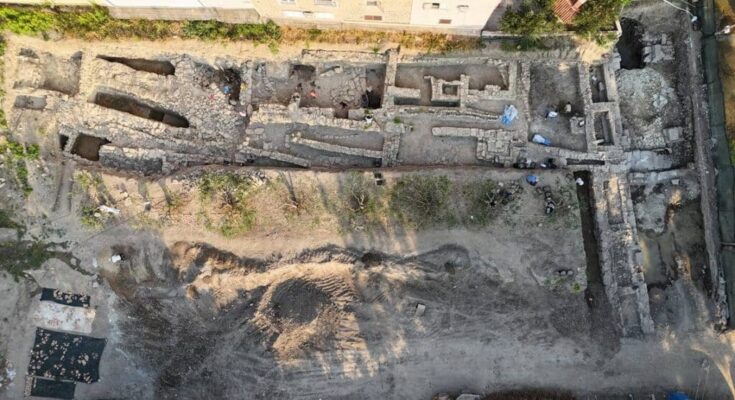
An ancient Greek defensive wall from at least 2,000 years ago was uncovered near the Adriatic coast of Croatia, the country’s Ministry of Culture and Media announced last week.
The discovery was made as archaeologists began excavating an empty lot in the town of Stobreč ahead of future construction projects.
The ruins of the wall have an L-shape. The shorter side looks like a row of five rectangular structures. The longer side has a less defined shape.
The defensive wall measures about 230 feet long and 10 feet high at its tallest point, archaeologist Marina Ugarković said.
Archaeologists described the structure as impressive, extremely monumental, and the best-preserved Greek wall in Croatia.

Ancient Greeks colonized today’s Croatia
The ancient Greeks began colonizing modern-day Croatia in the fourth century BC and influenced the region’s script, currency, trade, land use and city wall structures.
Greek settlers and traders established colonies and trading posts in this region during the classical period, primarily between the 6th and 4th centuries BC.
One of the most notable Greek colonies was Pharos (modern-day Stari Grad on the island of Hvar). It was founded by settlers from the island of Paros in the Aegean Sea around 385 BCE. Pharos became a significant cultural and economic center in the Adriatic.
Another important settlement was Issa (modern-day Vis), established by colonists from the Greek island of Syracuse in Sicily, around the same period. Issa became a thriving city-state and a major hub for trade and influence in the region.
The Greeks also established Epidauros (modern-day Cavtat, near Dubrovnik) as a coastal trading post and settlement. It served as an important point of contact between the Greek world and the local Illyrian tribes.
Ancient Greek power in the region was followed “from the 2nd century BC onwards” by the ancient Roman empire.

Stobreč’s ancient history followed this progression. The city was founded as a Greek settlement in 200 BC, before later becoming an ancient Roman trade hub.
Excavations at the site in Stobreč also uncovered dozens of artifacts, ancient Roman ruins, and a structure from the Middle Ages. Archaeologists plan to continue research at the site.
Ancient Greek-Illyrian helmet found in Croatia
Archaeologists recently discovered a Greek-Illyrian helmet dating 2,500 years in very good condition on Croatia’s Pelješac peninsula.

The same team that found the Greek-Ilyrian helmet in 2020, in the same place, has found the next helmet, which according to the first analysis is older than the one found earlier.
The previous example most likely belonged to a member of the warrior elite who was interred there because it was discovered in a grave with pieces of iron weapons.
Archaeologists think the recently discovered helmet may have been a votive deposit because it was discovered in a dry stone-walled addition to a grave.
Greco-Illyrian type helmets originated in Peloponnese, Ancient Greece, where it likely evolved from the Kegelhelm (or Kegel type) of the Archaic Period.



